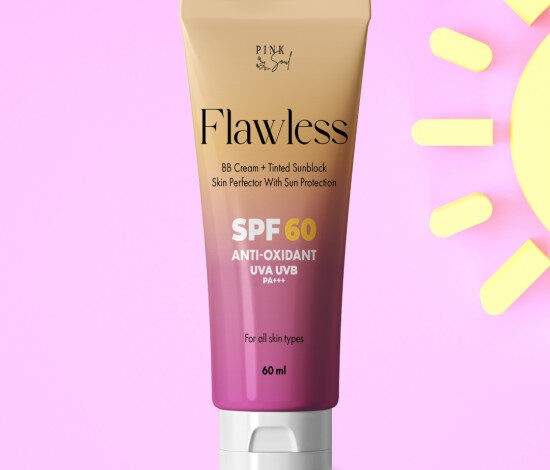Achieve a Flawless Complexion with the Right Sunscreen

Introduction to Sunscreen and Its Importance for Skincare
The quest for a flawless complexion often begins with the simplest yet most essential step: sunscreen. Many people underestimate its importance, thinking it’s only useful on sunny days or at the beach. However, incorporating sunscreen into your daily skincare routine can be a game-changer in achieving that radiant glow you desire.
Did you know that UV rays can cause premature aging and dark spots even on overcast days? That’s why understanding the right type of sunscreen is crucial for everyone—regardless of skin type or color. Whether you’re looking to enhance your natural beauty with tinted sunscreen or seeking out whitening options to brighten your complexion, this guide will navigate you through everything you need to know about selecting and applying the perfect product for healthy skin. Let’s dive in!
Understanding Different Types of Sunscreen: Physical vs. Chemical
When selecting sunscreen, understanding the difference between physical and chemical formulas is vital. Physical sunscreens contain mineral ingredients like zinc oxide or titanium dioxide. They sit on top of the skin, reflecting harmful UV rays away.
On the other hand, chemical sunscreens absorb UV radiation through their active ingredients such as avobenzone or octisalate. These formulas work by converting sunlight into heat, which is then released from the skin.
For sensitive skin types, physical options may be gentler and less likely to cause irritation. However, chemical sunscreens tend to have a lighter feel and can be easier to apply without leaving a white cast.
Choosing between them boils down to personal preference and specific skincare needs. Whether you opt for tinted sunscreen for added coverage or whitening sunscreen for brightening effects, knowing these differences helps in making an informed decision.
How to Choose the Right SPF for Your Skin Type
Choosing the right SPF goes beyond just picking a number. It’s essential to consider your skin type first.
If you have oily or acne-prone skin, opt for a lightweight formula, perhaps a tinted sunscreen that offers both coverage and protection without clogging pores.
For dry skin types, look for sunscreens that contain hydrating ingredients like hyaluronic acid or glycerin. A higher SPF can also provide extra moisture retention throughout the day.
Sensitive skin may benefit from mineral-based options with zinc oxide or titanium dioxide. They tend to be gentler and less irritating.
Darker skin tones should still prioritize sun protection but might choose products labeled as whitening sunscreen if they want added radiance without leaving a white cast.
Always test new formulas on a small area of your skin before applying them all over, especially if you’re prone to sensitivities.
The Role of UVA and UVB Protection in Sunscreens
UVA and UVB rays play distinct roles in skin damage. UVA rays penetrate deeply, contributing to premature aging and wrinkles. They can even cause DNA damage linked to skin cancer.
On the other hand, UVB rays primarily affect the surface of your skin. These are responsible for sunburns and have a significant role in developing melanoma, one of the most serious forms of skin cancer.
Choosing sunscreen that protects against both is crucial. Look for broad-spectrum options labeled specifically with “UVA/UVB protection.” This ensures comprehensive defense against harmful radiation.
Many tinted sunscreens offer this dual protection while also providing color correction benefits. If you’re aiming for a flawless complexion, combining skincare with effective sun defense becomes essential. Always check product labels to ensure you’re getting adequate coverage from both types of UV light.
Factors to Consider When Buying Sunscreen: Allergies, Sensitivities, and Environmental Impact
When purchasing sunscreen, it’s essential to consider any allergies or sensitivities you may have. Many formulations contain common irritants like fragrances and preservatives that could trigger reactions. Always opt for hypoallergenic options if your skin is prone to irritation.
Next, think about the environmental impact of your choice. Some sunscreens contain ingredients harmful to coral reefs and marine life. Look for biodegradable formulas labeled as reef-safe; they are better for the planet.
And don’t forget about texture! A tinted sunscreen can offer both protection and a touch of coverage, making it perfect for daily wear. Whether it’s a lightweight lotion or a thicker cream, choose one that feels comfortable on your skin.
Check the ingredient list carefully—avoid those with high levels of alcohol or harsh chemicals that might compromise your skin’s health over time.
Tips for Proper Application and Reapplication of Sunscreen
Applying sunscreen correctly is essential for maximum protection. Start with a generous amount—about a shot glass full for your entire body.
Make sure to cover all exposed areas, including often-missed spots like the ears, back of the neck, and tops of your feet. For your face, use around a quarter-sized dollop.
Reapplication is just as vital. If you’re swimming or sweating, reapply every two hours or immediately afterward. Even if it’s cloudy outside, UV rays can still penetrate through clouds.
Consider using tinted sunscreen for an added layer of coverage that evens out skin tone while protecting against sun damage. Whitening sunscreens can help brighten the complexion too.
Keep travel-size bottles handy in your bag or car so you never forget to refresh throughout the day. Make it part of your routine; consistency leads to healthy skin!
FQAs
When it comes to sunscreen, many questions arise. Let’s address some common queries to clear up any confusion.
What is the difference between tinted and whitening sunscreen? Tinted sunscreens provide a subtle color while offering sun protection. They can help even out skin tone without heavy makeup. Whitening sunscreens aim to lighten dark spots and uneven pigmentation over time.
How often should you reapply sunscreen? Ideally, every two hours or immediately after swimming or sweating. This ensures your skin gets consistent protection throughout the day.
Can I use expired sunscreen? It’s best to avoid using expired products as they may not offer adequate protection anymore.
Is higher SPF always better? Not necessarily. A broad-spectrum SPF of 30 provides sufficient protection for most skin types when applied correctly and regularly.
These insights can guide your choices in achieving that flawless complexion with confidence.
Common Myths About Sunscreen Debunked
Sunscreen myths can lead to misunderstandings that may harm your skin. One prevalent myth is that sunscreen isn’t necessary on cloudy days. In reality, up to 80% of UV rays can penetrate clouds, making protection crucial regardless of the weather.
Another misconception is that people with darker skin tones don’t need sunscreen. While it’s true darker skin has some natural protection, everyone should apply a broad-spectrum sunscreen. Skin cancer does not discriminate by pigmentation.
Many believe that once they apply sunscreen in the morning, they’re set for the day. However, reapplication every two hours or after swimming or sweating is essential to maintain optimal protection.
A common fear regarding tinted sunscreens and whitening sunscreens is that they will clog pores or cause breakouts. Quality formulations are designed with non-comedogenic ingredients aimed at nourishing rather than harming your complexion.
Some think using makeup with SPF eliminates the need for separate sunscreen application. Although helpful, relying solely on makeup for sun protection often doesn’t provide adequate coverage and effectiveness compared to dedicated products.
Understanding these myths helps pave the way toward healthier skincare habits and achieving a flawless complexion through proper sun care practices.





